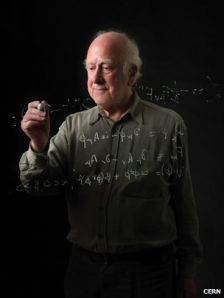Oct 16 2013
Peter Higgs and Francois Englert have been awarded the 2013 Nobel Prize in Physics for devising a mechanism to generate mass in gauge theories, and for predicting the existence of a new scalar boson resulting from this mechanism.
 Peter Higgs
Peter Higgs
Nearly 50 years after the seminal papers written separately by Peter Higgs and by Francois Englert and Robert Brout, a boson with properties consistent with their predictions was discovered at the Large Hadron Collider in Geneva, Switzerland.
The discovery of a Higgs boson is the culmination of a generation of searches at particle colliders of increasing size and energy. Two teams of researchers, the ATLAS and CMS collaborations, jointly announced the discovery on July 4, 2012, and this year published results constraining the new particle's properties. Oxford physicists have been centrally involved in the Large Hadron Collider and in the ATLAS detector for more than two decades. They have made key contributions to the discovery, from early R&D, through building the main silicon tracker used for the discovery, in operating the ATLAS detector, in maintaining a globally accessible computing site to process the vast amounts of data, and finally in analysing the data and demonstrating the existence of the new boson.
In 2015 the LHC will increase in collision energy from 8 to 13 TeV. This energy increase will allow physicists to study the new particle in more detail. The higher energy also brings prospects of additional discoveries addressing the many remaining mysteries of nature, such as the source of dark matter and the asymmetry between matter and antimatter in the universe. Today, we celebrate the achievement of the prediction and discovery of the source of mass for the fundamental particles of nature.